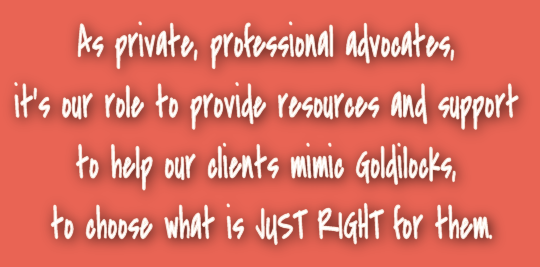(Channeling the Plain White T’s here…)
The book is a childhood classic, Shel Silverstein’s The Giving Tree. It tells the story of a tree that gives all it has to a boy as he grows from little boyhood to adulthood. From providing shade and a place to climb, to allowing the boy to sell the apples it yields, to finally letting the boy (now a man) cut it down to build a house, and then later build a boat out of it. In the end, when the tree has nothing left to give, “Boy” simply sits on the Giving Tree’s stump to rest.
Not everyone is aware of the great controversy that surrounded The Giving Tree when it was published. Such diverse groups as those who study children’s literature, Christian groups, and psychologists still today debate the meaning of the book. Some believe it is the perfect example of how one can show love through giving. Others believe the boy became abusive to the tree because all he did was take, take, take, but never give or share. Some use the book to illustrate the giving of oneself. Still others think it is one of the saddest children’s books ever written.
I was reminded of this book recently after hearing from Natalie (not her real name), who was resigning her APHA membership. She can no longer sustain her practice, and had to close it down because, as she explained, she just can’t find clients who will pay her to advocate for them.
I asked Natalie what marketing she had tried. Her reply: “I don’t have time for that. I’m too busy helping the people who can’t afford to pay me.”
Come again?
Natalie was – past tense – an advocacy giving tree.
Now she has to find a job and won’t have time to advocate anymore.
This happens so frequently, especially with newly minted advocates who are just starting to get a practice off the ground. They get a phone call, or a referral from a friend, or they connect with one of the people who has posted to the APHA site… the request sounds like something they can manage (and maybe learn from), but maybe they never quite broach the subject of cost and money. Or they do – and the potential client replies with “that’s too expensive” or “I can’t afford that”. Then, instead of sticking to their business guns, they give in, and help the person for free. Now they aren’t business people. They are volunteers.
I’ve written previously about the very giving nature of patient advocates and the potential detriment to success, in particular citing volunteerism as standing in the way of growing one’s business. But I hear a chorus of excuses: “They were desperate!” or “I didn’t think it would take me too long, but…” ! Or they excuse their volunteerism by thinking it’s a way to get on-the-job training, therefore, such an admonition against volunteering doesn’t apply to them.
I have to ask, what good does on-the-job training do if you never get your practice off the ground?
When someone gives in to a decision they believe to be good for someone else, even when it comes at their own detriment, psychologists call them “pleasers“; that is, they can’t say NO. Even when the choice makes them uncomfortable. Even when they never meet their own goals. Even when they give up far more than they ever should, they continue to focus on pleasing others because they can’t say no.
Too many advocates are pleasers, their own versions of giving trees.
There are at least 8 different ways they prove this over and over again.
1. As described above, as a pleaser you are spending too much time working for free for people you THINK can’t pay you (You never really try to figure out whether they can afford your services or not. They make noises about your services being expensive, they tell you they can’t afford you, and you give in.)
2. You are doing free assessments. No professional, private advocate should ever be doing free assessments. Now, I’m not referring to the 15-20 minute phone call that kicks off a relationship. I’m talking about the needs assessment that determines what services you’ll describe in a contract. Rarely (If ever?) does a well-written assessment and care plan result in a contract unless it has been a paid service to begin with. (Learn how to charge and then develop assessments here.)
3. You aren’t billing for all the time you spend with a client. In effect, this is another form of volunteerism.
4. You aren’t tracking all the time you spend on a client’s case, which in turn means the time isn’t being billed, which means – again – you are volunteering time you aren’t accounting for.
5. You aren’t asking for your money up front; then you aren’t collecting afterward because people just won’t pay you – or – you have to ask for your money, and that’s uncomfortable, so you don’t ask, and they don’t pay.
6. You are driving your clients to appointments when you should not be. You aren’t insured to do so, and you’re putting your own financial stability at risk by doing so. (There are other ways to make sure your clients get to those appointments, and you can meet them there.)
7. In the same vein, you aren’t charging for travel time.
8. You aren’t charging for time for finding another advocate who is well-suited to providing the services you don’t provide yourself – or put another way – you aren’t subcontracting with advocates whose services complement yours. Instead you are simply referring long-standing clients, people you have already worked with, to other advocates. (Please note here, that no, you should not be paying or accepting referral fees, but yes, you should have a way to be paid by the client for finding the right person.)
You you might even think of more ways you are an advocacy giving tree – giving your way out of business.
Stop it! Please. I beg you. So many more people on this planet need your help, and you are giving away the opportunity to help them in the future.
If it makes you feel any better… When I was younger, I, too, was a pleaser. About the time I became a single parent, juggling two young daughters, I finally made the effort to learn to say no. I am, however, far from an expert in helping others do the same, so instead I found a few references to help those of you who KNOW you need to learn:
- From PsychCentral: Learning to Say No
- From LifeHacker: How to Say No (Without Being an *ssh*le)
- From Time Magazine: How to Learn to Say ?No?
If you are a pleaser, if you see yourself as an advocacy giving tree, please take the time to read those articles – and more if necessary. Why not share your favorite approaches below?
And then please work hard to share your shade, to share your branches, even your apples – all those parts of you that can be replenished. But don’t give away what you can’t get back – your time.

Don’t let the false sense of success from giving too much in the short term stand in the way of true success, plus far more ability to give later, in the long term.
Don’t become a stump with no more to give.
LEARN ABOUT APHA MEMBERSHIP | FIND MORE REASONS PATIENTS NEED ADVOCATES
Top Photo – the Giving Tree Park in Holon, Israel
The Giving Tree cover downloaded from Wikipedia.





I could not agree more, being in business for yourself is not for everybody!
Excellent post Trisha! Most if not all advocates are born out of a love of helping people. The Nightingale Syndrome came to mind when I read your article. This is the sometimes, overwhelming feeling and need to help someone that is in distress. It is a human reflex to want to help someone in need.
However, when it becomes detrimental to your own well being, such as your post examples, “helping” begins to cost too much. You must being running a business first in order to help someone. Your post example is a great reminder.
Thank you again for reminding us all of our value and worth as advocates.
Loved this! Thank you so much for taking the time to write this and for the guidance. As a newer private practice advocate I am learning to have boundaries and your article just reassured me. I spend a lot of time on marketing mostly because I do want to make sure I’m getting referrals for people who are not only needing help but who are also prepared to pay for professional assistance .
Thank you again ,
Erica Smalley,LVN ,CSA
A Hand To Hold ,Senior Care Coordination